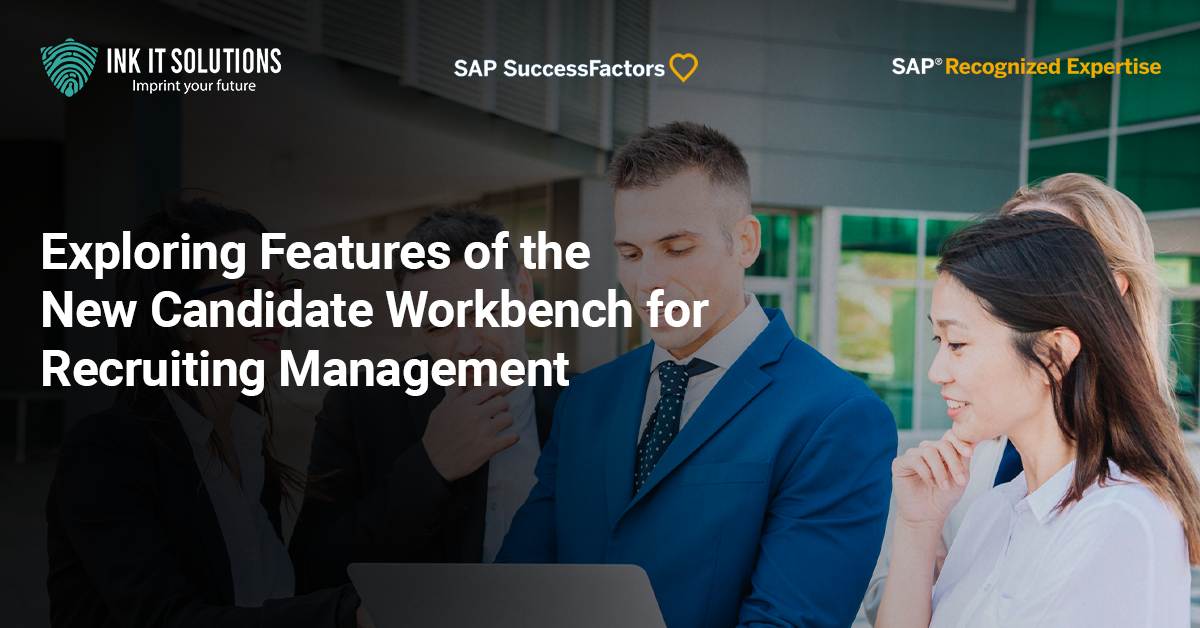
Exploring the Features of the New Candidate Workbench for Recruiting Management
Recruiting the right talent is at the heart of organizational success, and with advancements in technology, the process has become more streamlined and efficient. The New Candidate Workbench in Recruiting Management is a game-changer for recruiters, enabling them to manage candidates more effectively while enhancing collaboration and decision-making. This article explores the standout features of this innovative tool and how it can transform your recruitment process.
1.Intuitive User Interface
The New Candidate Workbench offers a modern, intuitive design that simplifies navigation. Recruiters can now easily manage multiple requisitions and candidate pools on a single screen. This reduces the time spent switching between tabs and searching for information, ensuring recruiters focus more on candidate engagement.
2. Centralized Candidate Management
The workbench consolidates all candidate-related information, including profiles, resumes, application statuses, and interview notes, into one place. This centralized approach ensures that recruiters and hiring managers have all the necessary details at their fingertips for quicker decision-making.
3. Advanced Search and Filter Options
Finding the right candidate in a large database can be challenging. The New Candidate Workbench comes with enhanced search functionality, allowing recruiters to filter candidates by skills, experience, location, and other criteria. This ensures that the best candidates are identified faster, reducing time-to-fill for critical roles.
4. Improved Collaboration Tools
Recruitment is often a team effort involving recruiters, hiring managers, and other stakeholders. The New Candidate Workbench facilitates seamless collaboration through shared notes, real-time updates, and status tracking. These features ensure everyone is aligned and well-informed throughout the hiring process.
5. Smart Notifications and Alerts
Timeliness is crucial in recruitment. The workbench provides smart notifications and alerts for upcoming interviews, pending approvals, and candidate status changes. This proactive communication helps recruiters stay on top of their tasks and ensures no candidate falls through the cracks.
6. Enhanced Candidate Profiles
Candidate profiles in the workbench are more detailed and customizable. Recruiters can add tags, prioritize candidates, and even rate profiles based on initial screening. This level of detail helps in creating a more organized and efficient candidate pipeline.
7. Analytics and Reporting
The workbench includes built-in analytics and reporting tools that provide insights into recruitment performance. Recruiters can track metrics such as time-to-hire, application-to-interview ratios, and diversity statistics, enabling data-driven improvements to the recruitment strategy.
8. Mobile-Friendly Access
Recruitment doesn’t always happen at the desk. With mobile-friendly access, recruiters can review candidates, schedule interviews, and provide feedback on the go, ensuring a continuous workflow regardless of location.
9. Integration with Other Systems
The New Candidate Workbench integrates seamlessly with other HR systems such as onboarding, payroll, and talent management solutions. This ensures a smooth transition for candidates from recruitment to their first day on the job, enhancing their overall experience.
10. AI-Powered Recommendations
Leveraging artificial intelligence, the workbench offers candidate recommendations based on job descriptions, past hiring patterns, and candidate profiles. This feature not only saves time but also improves the quality of hires by identifying the best-fit candidates.
For more information, you can visit our website https://inkitsolutions.com/ or call us at 9891663202
FAQ:
HR analytics refers to the systematic process of collecting, analysing, and interpreting data related to an organisation’s workforce. The primary objective is to gain insights into various aspects of human resources such as recruitment, employee performance, employee engagement, talent development, workforce planning, compliant management etc.
- Evidence-Based Insights
- Predictive Analysis
- Identification of Trends and Patterns
- Risk Mitigation
- Resource Allocation
- Performance Management
- Talent Acquisition and Retention
- Descriptive Analytics: It involves analysing historical data to understand what has happened in the past; giving you trends, patterns, and relationships within HR data.
- Diagnostic Analytics: It involves analysing HR data to uncover root causes, correlations, and relationships between different variables.
- Predictive Analytics: Predictive analytics uses statistical algorithms and machine learning to forecast future trends.
- Prescriptive Analytics: It involves analysing HR data to identify and recommend the best course of action.
Data-driven decision-making in HR refers to the practice of using data and analytics to inform and guide HR-related decisions. Instead of relying solely on intuition or experience, HR professionals leverage quantitative information to make choices that improve workforce effectiveness and align with organisational goals.


